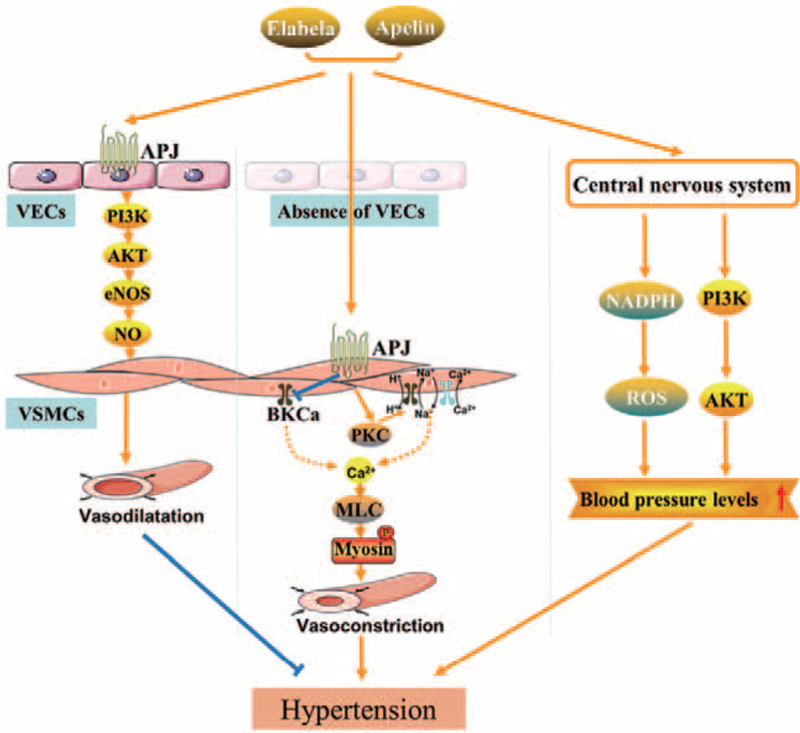Figure 1.
Underlying mechanisms of elabela/apelln-APJ axis in regulating the blood pressure levels in the peripheral and the central nervous system. Both elabela and apelin activate endothelial APJ producing vasodilatation by pathways including the PI3K/AKT/eNOS signaling. Moreover, the elabela/apelin-APJ axis induces vasoconstriction in the absence of endothelium through the PKC, Na+–Ca2+ exchange, and BKCa-dependent pathways. Finally, in the central nervous system, activation of the elabela/apelin-APJ axis promotes superoxide formation by enhancing the PI3K/Akt phosphorylated signaling, thereby contributing to blood pressure elevation. AKT: Protein kinase B; APJ: Apelin receptor; BKCa: Large-conductance Ca2+-activated K+ channel; eNOS: Endothelial nitric oxide synthase; MLC: Myosin light chain; NADPH: Nicotinamide adenine dinucleotide phosphate; NO: Nitric oxide; PI3K: Phosphatidylinositol 3-kinase; PKC: Protein kinase C; ROS: Reactive oxidative species; VECs: Vascular endothelial cells; VSMCs: Vascular smooth muscle cells.

